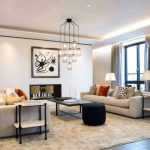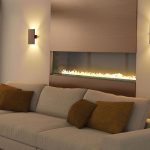Lighting plays a crucial role in the overall design of a living room. Not only does it serve a functional purpose in making the space usable, but it also sets the mood and ambiance for the room. In choosing the right lighting design for a living room, it is important to consider both form and function.
One key consideration when designing the lighting for a living room is the type of activities that will take place in the space. For example, if the room is primarily used for watching television or reading, task lighting such as table lamps or floor lamps may be necessary to provide focused light for those activities. On the other hand, if the living room is used for entertaining guests or relaxing, ambient lighting such as overhead fixtures or wall sconces may be more appropriate to create a warm and inviting atmosphere.
In addition to the type of activities that will take place in the living room, the size and layout of the space should also be taken into consideration when designing the lighting. Larger living rooms may require multiple light sources to ensure that the entire space is adequately lit, while smaller living rooms may benefit from strategic placement of light fixtures to create the illusion of a larger space.
Another important factor to consider when designing the lighting for a living room is the color scheme and decor of the space. Light fixtures should complement the overall design aesthetic of the room, whether it is modern, traditional, or eclectic. Choosing fixtures that match or complement the colors and materials used in the room can help create a cohesive and harmonious look.
When designing the lighting for a living room, it is also important to consider the natural light sources in the space. Maximizing natural light can help reduce the need for artificial light during the day and can also help create a more cheerful and uplifting atmosphere. Using light-colored window treatments or strategically placing mirrors can help reflect and amplify natural light in the room.
Overall, the key to a successful lighting design for a living room is to strike a balance between functionality and aesthetics. By considering the activities that will take place in the space, the size and layout of the room, the color scheme and decor, and the natural light sources available, homeowners can create a well-lit and inviting living room that suits their needs and showcases their personal style.
 bebadesign Interior Design Ideas
bebadesign Interior Design Ideas














